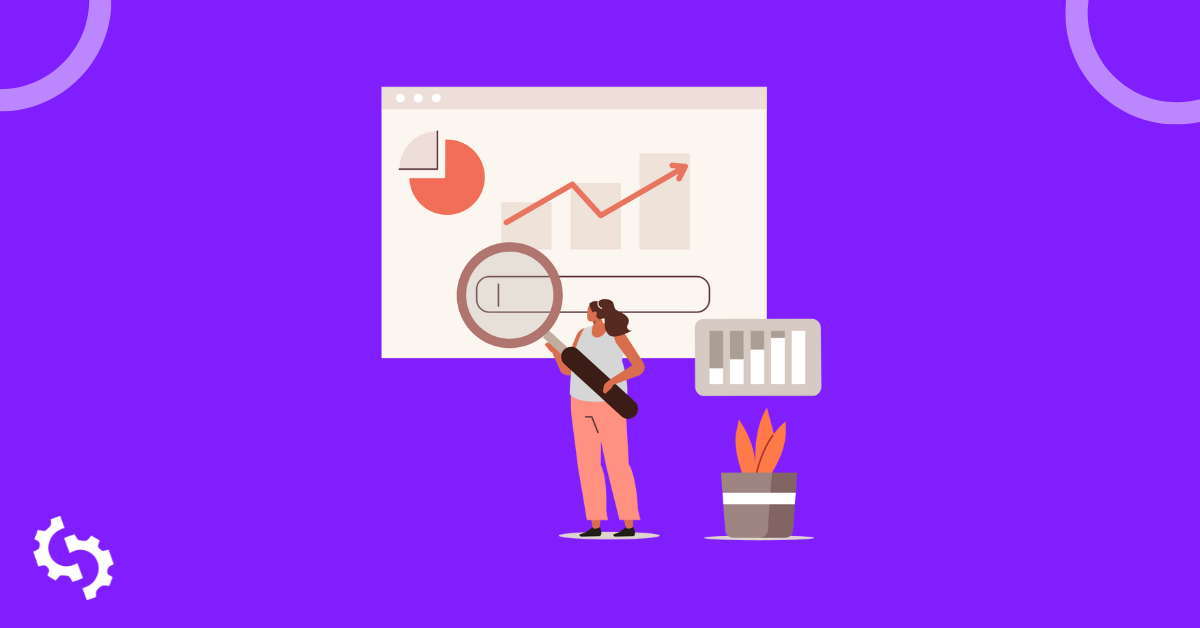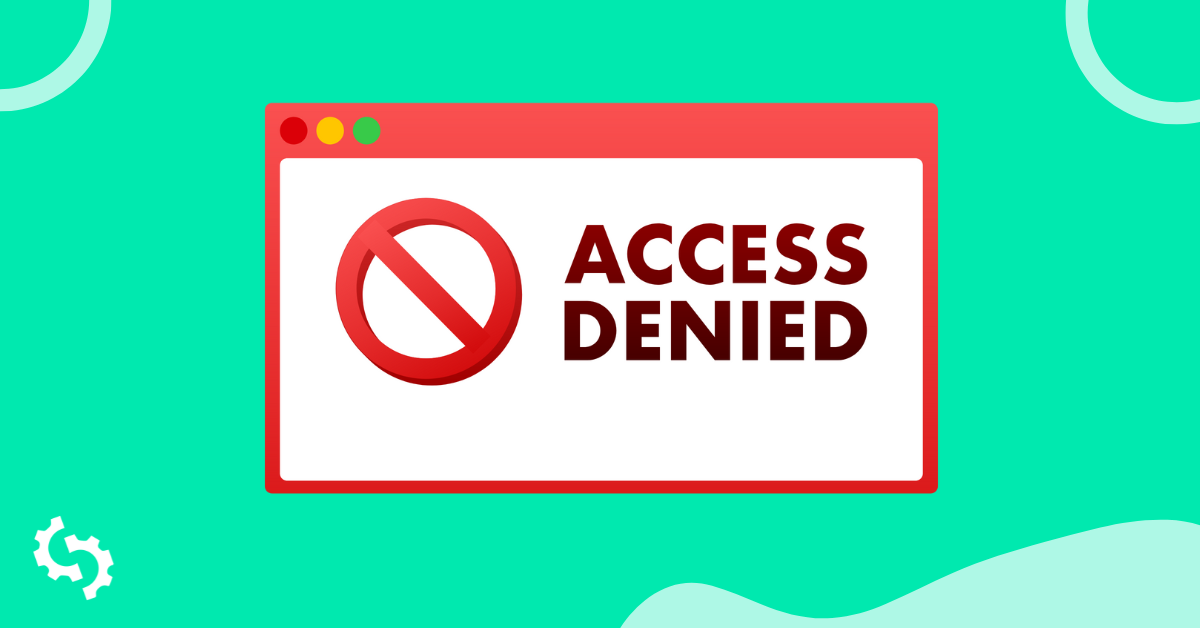
We all want maximum value for what we buy, use or build.
Take gold bars, for example.
We buy the best bars we can get with our money because we want the most value—and the chance to cash in on our investments when it's needed.
That same concept applies to backlinks.
In SEO, you need to be creating strong, valuable backlinks that pay off in the long term.
Links that help you reach the top of Google, drive tons of organic traffic to your website, and make your entire SEO strategy profitable.
But, just like gold bars, it's tough to know whether the links you're building are valuable enough to pay off.
...Or is it?
To find the answer, you'll need to investigate using a measurement called "link equity."
What Is Link Equity?
Before we dive into the deep end, let's chat about exactly what link equity is.
Here's the simple explanation:
Link equity is the value of a link, and how much SEO power each link passes through to your own website from the URL it's linking from.
It's also known as "link juice"—if that phrase doesn't make you want to vomit in your mouth.
Although I run the risk of stating the obvious, it's your goal to get as many high equity backlinks as possible.
Why? Because they're more powerful, they help to improve your SEO (whether that's increasing your keyword rankings or boosting search traffic), and boost overall search visibility.
In a nutshell:
Links with lots of equity are any SEO's dream.
So, in true Shia LaBeouf style, let's start making those dreams come true.
Contrary to popular belief, not every backlink is a good backlink.
Some links are more valuable than others (i.e. have more link equity)—these are the ones that make a difference to your rankings.
Here are the eight criteria to meet when you want to build powerful backlinks with the highest equity:
1. The Link Is External
External links (pointing to your site from another domain) have more link equity than internal links (pointing from one page on your site to another).
In fact, you've got an extremely slim chance of ranking without them.
Research by Backlinko found that the number one postion in the search results has 3.8x more backlinks than positions two through 10.
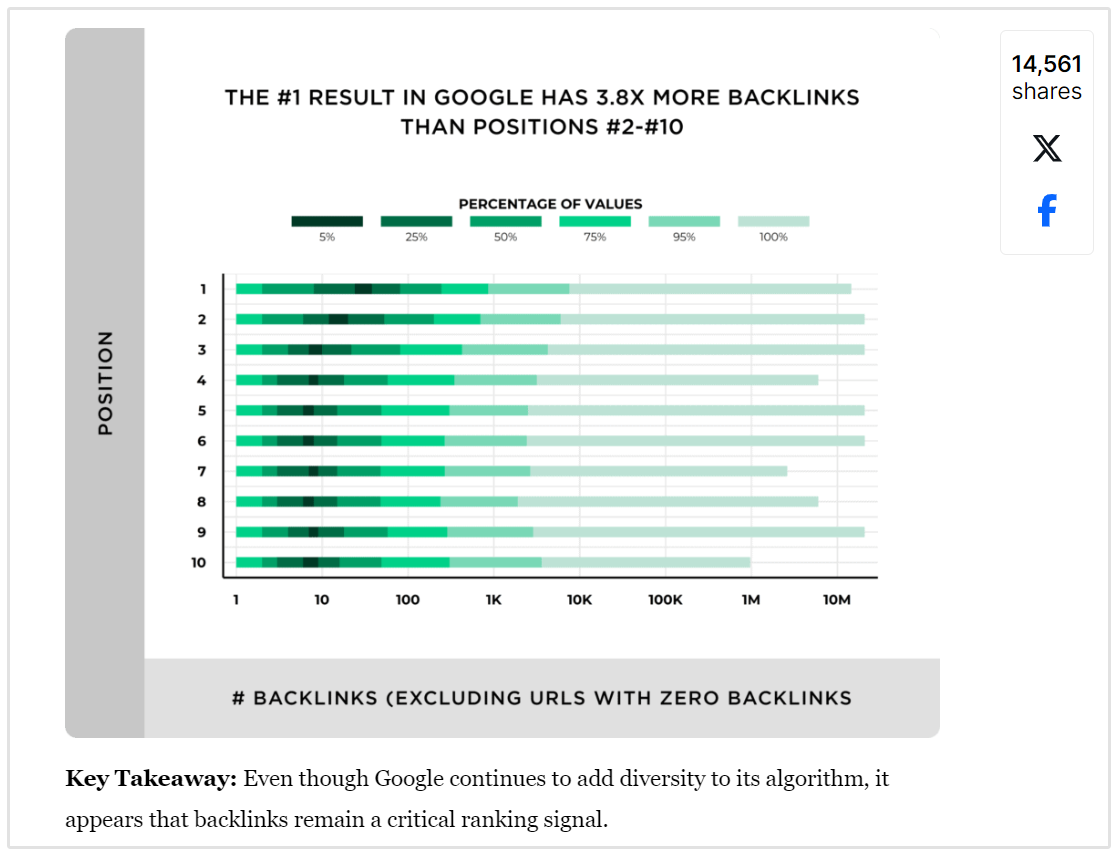
It's quite interesting why external links have higher link equity.
It's all to do with Google's main aim:
To show the best, highest quality results for any search query.
It makes sense then, that a website with more external links is more likely to offer high-quality content. People link to content that they enjoy and find valuable, so if a site has lots of backlinks, Google tends to rank it higher.
Essentially:
A site with more external backlinks means other websites trust it, and reinforces that Google should too.
So while an internal linking strategy is still important, make sure you're spending the majority of your time building external links from third-party websites.
2. The Link Is From an Authoritative, High-quality Domain
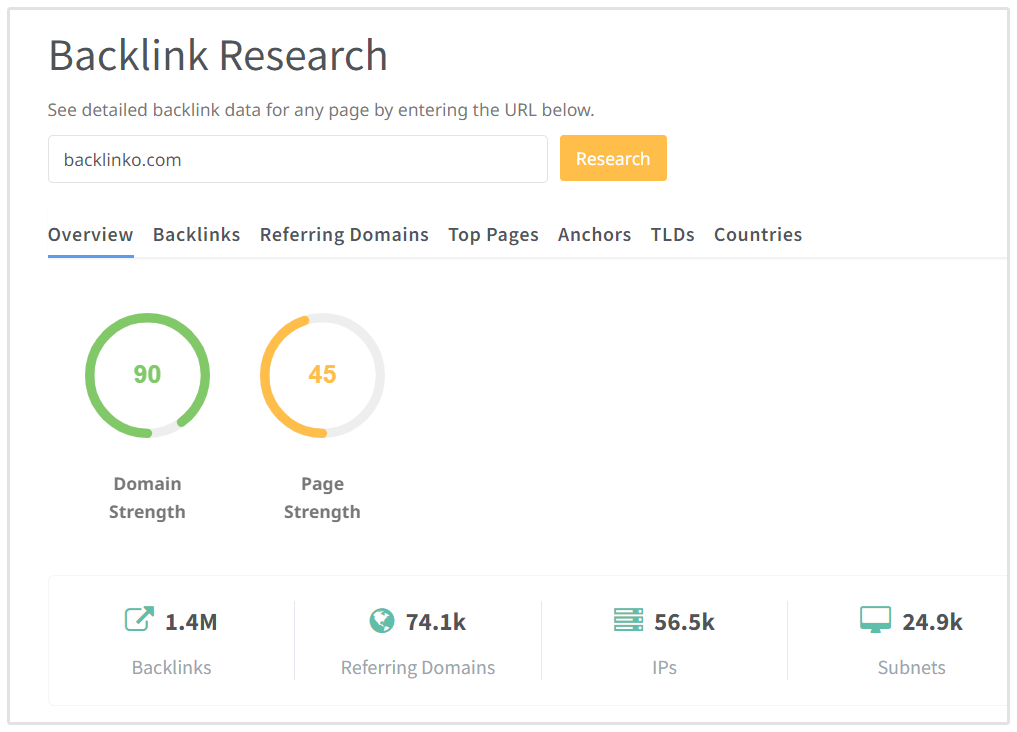
Now let's start getting into the specifics of high equity backlinks. This is where "not every backlink is a good backlink" really starts to come into full force.
There are plenty of places to get external links (you can even buy them in bulk), but to get an external link that's also high quality and authoritative is much more difficult.
It requires time, research and outreach. And the success rate is low.
But that's what makes these links so valuable—it's because they're so hard to get.
To assess the quality of websites that you're researching for link building, you'll want to look at metrics like Domain Authority (for the whole domain) and Page Authority (for a single page on the domain).
These are both scored out of 100. A score of 30+ is a pretty good indication that the website or page is high quality, while 50+ indicates a top-tier site.
You can quickly check the Domain and Page Authority of multiple sites/pages at a time with the Domain Authority Checker. Just enter the URLs you want to check and hit "Check Authority" for instant results—nice and easy!
3. The Link Is From a Popular, Linked-to Page

Found a high-quality site with high Domain Authority?
The next thing you need to investigate is the number of external links pointing to the page you want to get a link from.
(I know, this whole link building cycle is confusing—but bear with me.)
Linked-to pages are obviously popular. Tons of links must mean the site is offering some value, right?
So, if you're getting a backlink from a well-linked-to page, it has more link equity and weight in Google.
Remember: Google wants to show the best results from the best websites.
How many backlinks do they have?
Are their backlinks from popular, authoritative domains?
If so, the site might be a good addition to your link building target list.
You can also check social shares of a specific page, to get an idea of how popular it is with its audience. SharedCount is a great tool for this.
Remember that the more backlinks and social shares a website has, the higher its overall link equity.
4. The Link Is Contextual
There are tons of places to get links, including:
- In the body of text (contextual)
- Author bio sections
- Website footers
- Blog sidebars
But nothing is straightforward in the SEO world, so of course some of these are more valuable (or have more equity) than others.
The best type of link with the most equity is contextual links.
Here are two examples from my recent guide to Amazon SEO:


Contextual links, also referred to as "in context" or "in body content" links, look the most natural. They hold the most link equity because they're part of the main content on the page.
Search engines place more value on links directly within the content, than (potentially) irrelevant links that are splashed across the sidebar or buried in the footer of every post.
Here are the three best ways to add link juice-rich, contextual backlinks to your arsenal:
A. Contribute Guest Posts to Relevant Sites
Over the years, guest blogging has gained a notorious reputation.
Many site owners assume it's a tactic only used by spammers—and that's usually due to the way they go about guest posting.
But trust me when I say it can have its benefits—if you do it correctly.
Just check out this case study, where Buffer grew their traffic dramatically using guest posting:

So what does "correctly" mean, exactly?
Successful guest posts:
- Are genuinely fantastic pieces of content (rather than 500 words of rubbish)
- Are published on websites with genuine traffic, and an engaged audience with similar interests to your own target audience
- Contain contextual author bios, where relevant
Check off all three and you've got yourself a solid backlink!
B. Design and Promote Unique Infographics
You can also build contextual links using infographics.
Simply build a 10x piece of content and publish it as a blog post.
Then, use a tool like Canva, Venngage or Lucidchart to design an infographic with the same information.
(Each of these platforms has free templates you can use. You've got no excuses—even if your graphic design skills are limited to the Paint app.)
Save the infographic to your PC with a keyword-rich name, and upload it to your website with the same alt text:
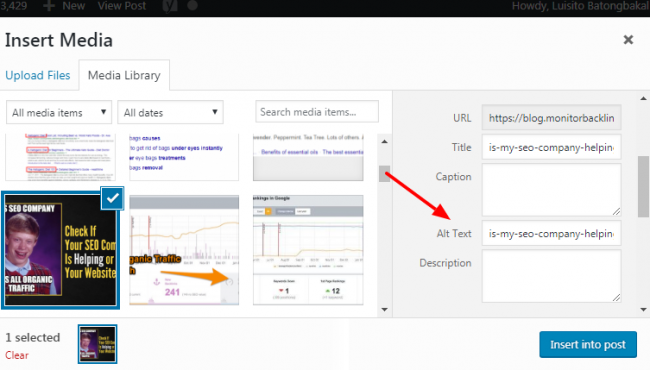
This will help Google understand what the photo is about and what it should rank for, giving you a nice image SEO boost.
Finally, use your infographic as ammunition to secure contextual links.
Use this outreach script to secure a placement, and offer to write a unique mini guest post to accompany it on the site you're pitching to.
Free, high-quality visual content? They'd be mad to pass it up!
And, since they'll need to credit you (or link to the original source) for the infographic, you'll score an equity-rich contextual backlink to your website.
It's really that simple.
C. Create and Distribute Press Releases
Have you recently announced interesting company news that people in your industry would be interested in?
Whether you've hired a prominent new member of staff, secured a huge client, moved offices or been nominated for an award, write up a press release and spread the word.
Collect the email addresses of journalists who have covered similar topics in the past, and whizz them a pitch.
You'll get a contextual backlink if:
- The journalist is interested in the story
- And you've included a link to your website in the press release itself (since many journalists copy and paste)
...Just like Printerland did when they sent a press release that was picked up by journalists at PA Life:
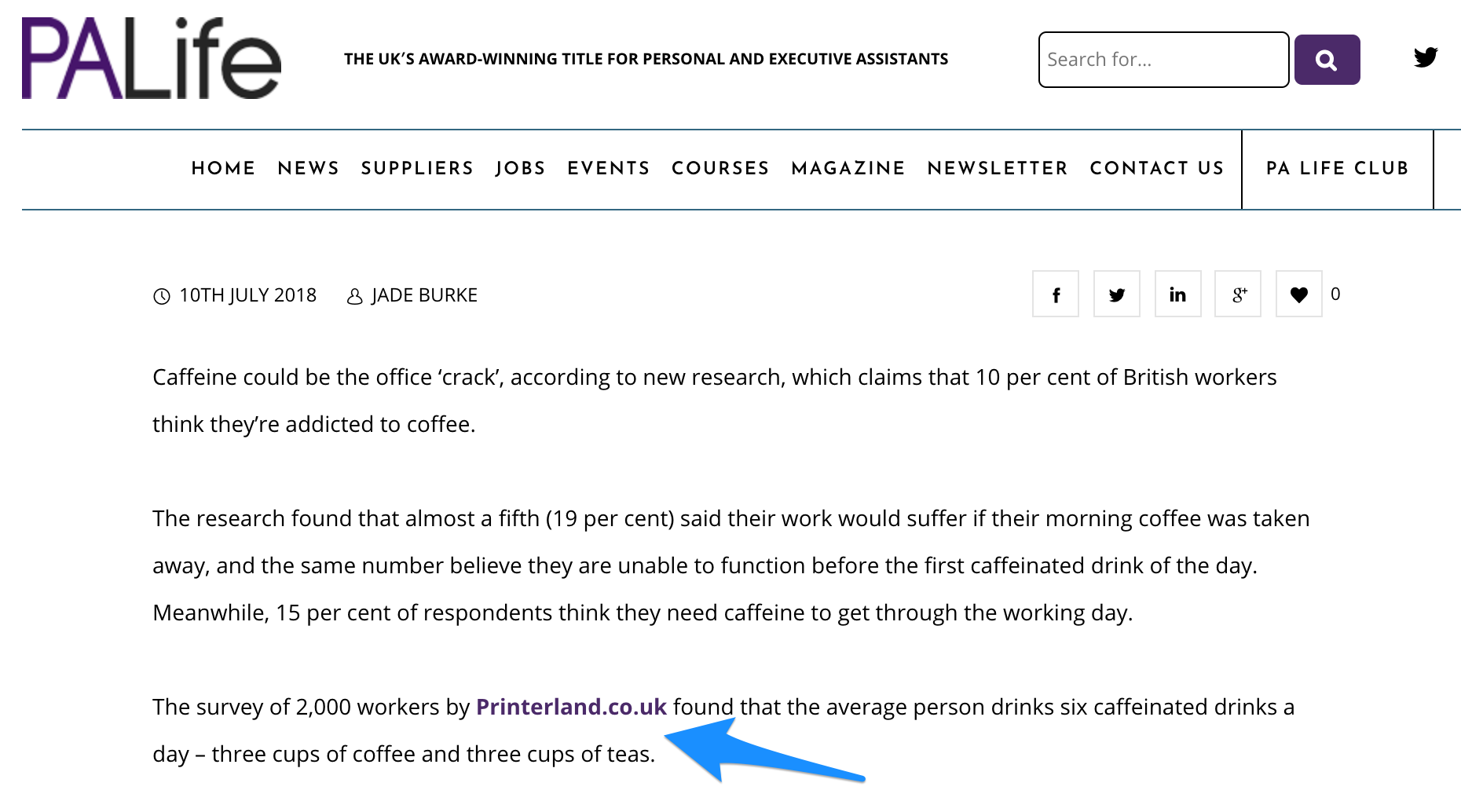
5. The Link's Anchor Text Includes Keywords Naturally
Anchor text tells Google exactly what the page being linked to is all about.
Here's an example on my site:

But did you know that optimized anchor text holds more link equity than text that isn't optimized?
It's true:
If the keyword you're targeting on the page itself is also in the backlink anchor text, it tells Google that the two are related—and that it should value it more (helping the page's overall ranking for similar search queries).
So, when building high equity links, make sure you know what keyword you're targeting with those links.
That's usually:
- A longtail keyword for blog posts
- A shorttail keyword for product, category or homepages
...Sense a "but" coming? I don't blame you—most best practices in SEO are usually too good to be true.
Here it comes:
Under the Penguin algorithm update, Google can penalize websites for building too many backlinks with exact match anchor text.
Thousands of backlinks with exactly the same anchor text looks unnatural, right?
That's why it's important to diversify the anchor text you're using when building links.
Having said that, it's still possible to build backlinks with lots of link equity using this technique. You'll just need to find similar keywords that still relate to the page.
Let's say that we wanted to build links to a page about free SEO tools, for example. Instead of using "free SEO tools" as the anchor text for every backlink we build, we could use variations like:
- "tools that are free for SEOs to use"
- "free tools for SEO"
- "free SEO tools for marketers"
- "check out these free SEO tools"
- "find free tools for SEO experts here"
Notice how they're all similar, but not exactly the same?
That's the idea you want to follow!
6. The Link Is From a Unique Domain
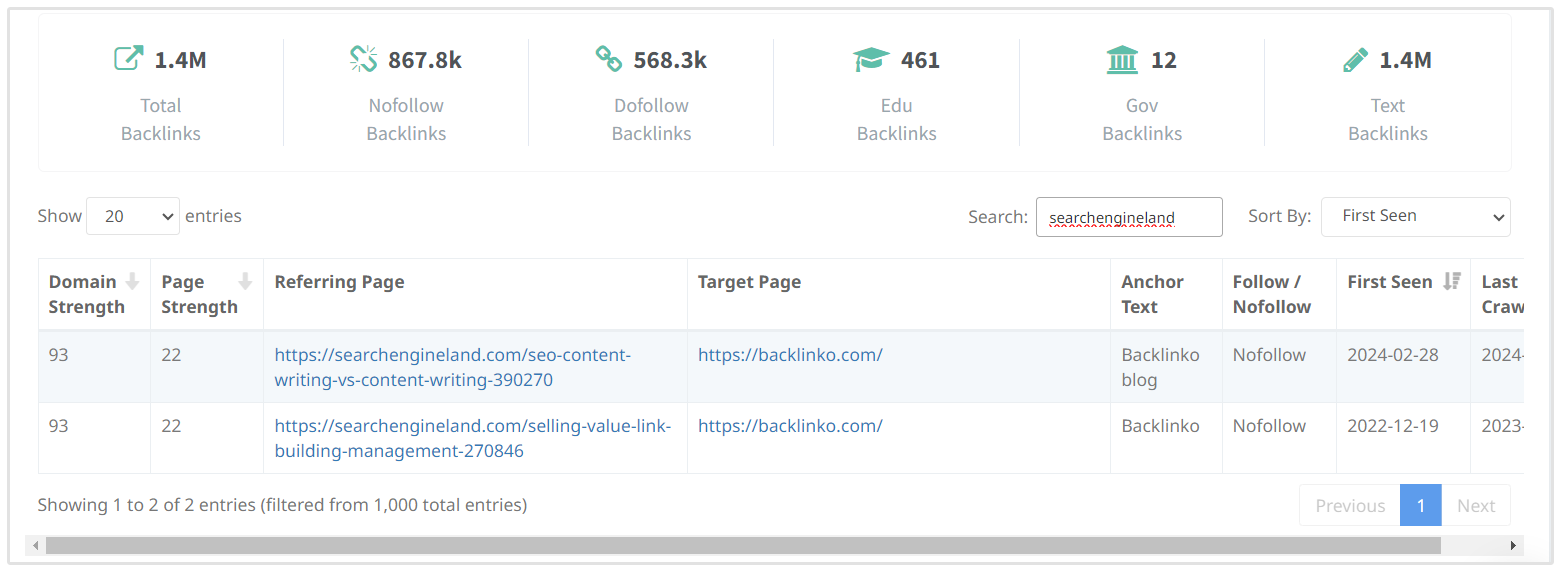
If you've built a strong relationship with the editor of an authoritative website, it can be tempting to create 10 or 20 backlinks pointing from their site to yours.
An easy way to boost your backlink numbers, right?
Maybe... But it certainly isn't the best way to boost your link equity.
It's better to have 100 links from 100 different domains, rather than 100 links from one domain.
Why?
Because search engines view these unique websites, also known as "linking domains" or "root links," as more valuable.
AKA they've got more link equity.
If you've got 10 links from 10 different pages on the same website, that counts as just one root link.
But if you've got 10 links from 10 different domains, that counts as 10 root links.
So it makes sense to get backlinks from unique domains wherever possible, right?
A collection of root backlinks protects your website, too.
Let's say you've built 100 links from a single root domain, for example. If that site were to:
- Get penalized by Google, you'd be at risk of being penalized, too.
- Shut down, you'd lose a ton of backlinks (and the time you spent building them would be a total waste).
As a general guideline, aim for 2-3 backlinks per unique/root domain.
It's a better use of your time to diversify your backlink profile and add more root domains to it, rather than put all your eggs in one basket and focus on just one or two websites.
7. The Link Is Followed
Great job! You've built (what looks like) a perfectly good link from a huge website with strong ranking power.
...But is that actually true?
These days, most big publishers—including Huff Post, Forbes, Entrepreneur and Inc—add a "rel=nofollow" attribute to their external links. It tells Google not to associate their site with the one they're linking to, meaning it has very little link equity.
To find out whether your link has the nofollow attribute, just right-click the anchor text of your backlink and select "Inspect."
A section of the page's code will pop up in another box.
If you can find the "rel=nofollow" code, I'm afraid it's a low equity link:

...But don't be disheartened!
You're able to multiply the link equity nofollow backlinks have by reaching out to the publisher, and asking them to consider removing the attribute and making it a followed link.
Disclaimer: This tip might only work for smaller website, but there's no harm in asking, right?
Going forward, when you're attempting to build new high equity backlinks, check out the website and see whether their external links have the "rel=nofollow" attribute.
If they do, it might be best to leave them off your priority list for the minimal link juice they pass through.
8. The Link Is Working
The final thing to check for maximum link equity is pretty obvious, but you need to make sure the link works.
If you've recently moved or deleted a page on your website, you could be missing out on link equity altogether if you've got backlinks pointing to the page, but haven't redirected them correctly to another URL.
For example, if you have a blog post on "SEO tips for beginners" but you delete the page, any backlinks pointing to the original blog post will take users to a 404 error page.
That doesn't do any favors for user experience (a known ranking factor for many search engines), nor does it help Google spiders to follow the path. It stops them in their tracks. So why would Google reward you with link equity?
You don't need to waste your high-value backlinks every time you move or update your URLs, though.
By redirecting them using a permanent 301 redirect, you'll pass anywhere between 90-99% of the original link's equity.
Use a tool like Redirection (for WordPress), and automatically redirect anyone who clicks the deleted URL to its replacement URL:

The only catch? You'll need to direct people to the next, most relevant page on your website.
For example, if your "SEO for beginners" blog post has been deleted, add a 301 redirect to another blog post on SEO tips, or your SEO services page—rather than just your homepage—to improve user experience.
It's frustrating when you click a link and arrive somewhere totally different than what you expected.
So don't make your audience do the same when they follow a link to your website.
A Word of Warning: Diversify Your Backlink Profile
Before you rush off to build tons of high equity backlinks, I've got (yet another) word of warning:
Make sure your backlink profile looks natural.
(I know I've harped on about it at various points throughout this article, but neglect this part of your link building strategy and there's a high chance you'll spend the next six months trying to remove a Google penalty. And trust me, that's not an easy job to do.)
Google rewards natural sites, but gaining too many high equity links can look suspicious.
Use the criteria above for 95% of your manual link building strategy, and create incredible content that's likely to pick up links from other sites naturally.
Conclusion
As you can see, building strong backlinks with lots of link equity is a tough nut to crack.
You'll need to keep a close eye on various metrics to make sure your links will help your SEO strategy, while remembering to ask yourself whether the links you're building balance those already in your backlink profile.
But don't give up. You'll get there, and when you do, it'll be well worth the effort!


